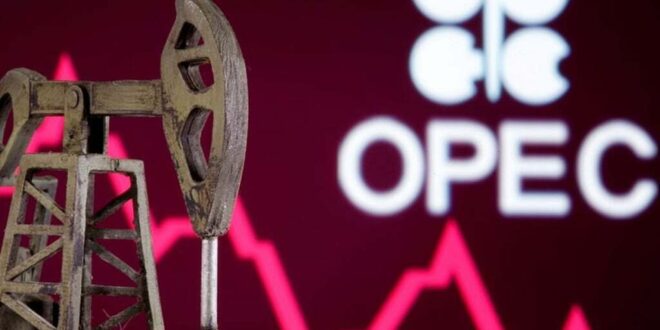Oil rebounded on Tuesday after falling to more than 11-month lows in the previous session, as investors weighed a potential output adjustment from the major oil producers, who are set to have a key meeting this week.
Brent crude futures advanced $1.81, or 2.2 per cent, and traded at $85.00 a barrel at 0446 GMT. U.S. West Texas Intermediate (WTI) crude futures rose $1.37, or 1.8 per cent, to $78.61 a barrel.
Brent settled down 0.5 per cent the previous day, having slumped more than 3 per cent to $80.61 earlier in the session to its lowest since Jan. 4. WTI settled up 1.3 per cent on Monday after touching its lowest since December 2021.
Although the market is already correcting itself after a sharp drop, word that the OPEC+ would seriously consider additional production cuts at the upcoming meetings further fuelled the price jump, analysts from Haitong Futures said in a note.
“Although this is merely a guess … not the official statement from the OPEC, it still reflects the near-term market sentiment and is likely to be the turning point of the oil prices,” they said.
The Organization of the Petroleum Exporting Countries (OPEC) and allies including Russia, known as OPEC+, are set to hold a meeting on Dec. 4. Analysts at Eurasia Group suggested in a note on Monday that weakened demand out of China could spur OPEC+ to cut output.
OPEC+ started to lower its output target by 2 million barrels per day (bpd) in November, aiming to shore up oil prices.
But the fear of demand destruction in China kept pressure on the market despite a drop of daily COVID-19 cases on Monday.
“Bearish moods toward oil prices are spreading in Asia due to concerns about a decline in China’s demand while the rare protests over the weekend also raised fears over the impact on Chinese economy,” said Toshitaka Tazawa, an analyst at Fujitomi Securities Co Ltd.
The rare street protests that erupted in cities across China over the weekend were a vote against President Xi Jinping’s zero-COVID policy and the strongest public defiance during his political career, China analysts said. Beijing has stuck with the zero-COVID policy even as much of the world has lifted most restrictions.
Markets are also assessing the impact of an upcoming Western price cap on Russian oil.
Group of Seven (G7) and European Union diplomats have been discussing a cap of between $65 and $70 a barrel, with the aim of limiting revenue to fund Moscow’s military offensive in Ukraine without disrupting global oil markets. Russia calls its actions in Ukraine “a special operation”.
But EU governments failed to agree on Monday on the cap, with Poland insisting the cap should be set lower than proposed by the G7, diplomats said.
The price cap is due to come into effect on Dec. 5, when an EU ban on Russian crude also takes effect.

 Iran Energy News Oil, Gas, Petrochemical and Energy Field Specialized Channel
Iran Energy News Oil, Gas, Petrochemical and Energy Field Specialized Channel



